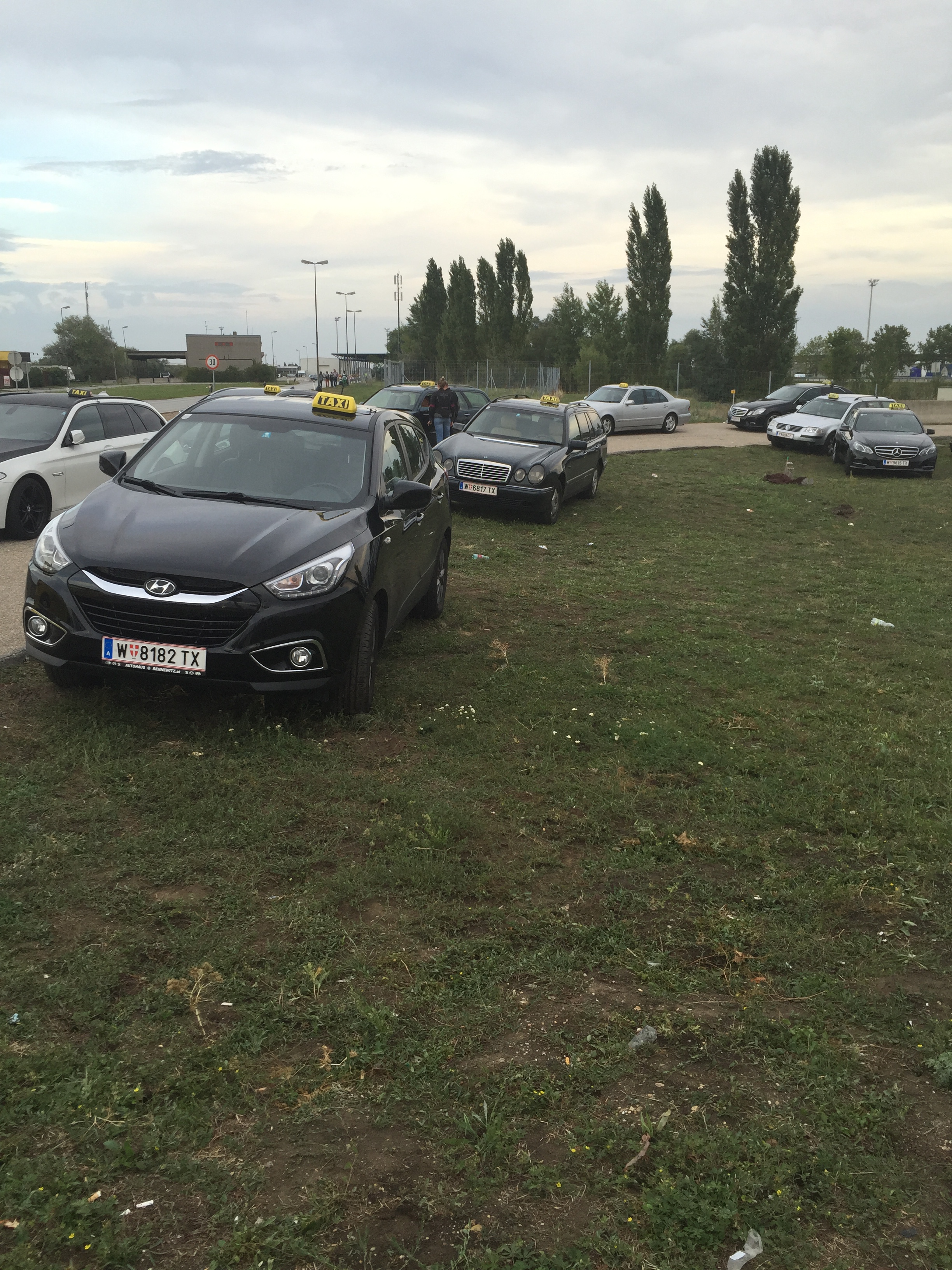Optimists
How do you make tens – perhaps hundreds – of thousands of people who are the source of apprehension across Europe disappear? After watching Monday’s closing of the Serbian border, DeWitt and I set off yesterday to follow the refugees’ northwest passage across Hungary to Austria. We knew they had been put on buses and trains for the border, so we bypassed Budapest and headed for the university city of Gyor. A notable police presence was in and around its railroad station, but those who had inhabited it for days were gone, and the waiting room was empty. On a tip, we drove to the small border town of Hegyeshalom, whose station was also empty. But debris beside two empty trains bespoke the recent presence of many people.
The small road out of town, which led ultimately to Vienna, was lined with discarded clothes and plastic water bottles. We followed it until we came to a police roadblock. When we suggested we would like to take the scenic route to Vienna, we got an emphatic one-word reply: “Closed.” Now we knew for sure where the refugees were, but they have very big policemen in Hungary, so we took the highway to the border. As we crossed into Austria, we saw, on our right, the by-now-familiar city of brown tents and blue-uniformed police. We pulled into a rest stop, which was teeming with taxis,and walked over to the camp. I produced my Library of Congress card, and after some scratching of heads, I was allowed inside the police lines.
An Austrian couple (he originally from Turkey, she from Hungary) had come to the camp to offer refugee families free rides to Vienna. "It is" she said, "the least we can do."
Everyone in the camp was headed to Vienna, either by bus or, if they had money, by taxi.

Many of the photos by DeWitt Sage.





